Americans Are Abandoning the Communal Meal
Consuming food all by oneself is an anomaly in the history of human civilization, a deviation from millennia of tradition. And more and more Americans are doing it.
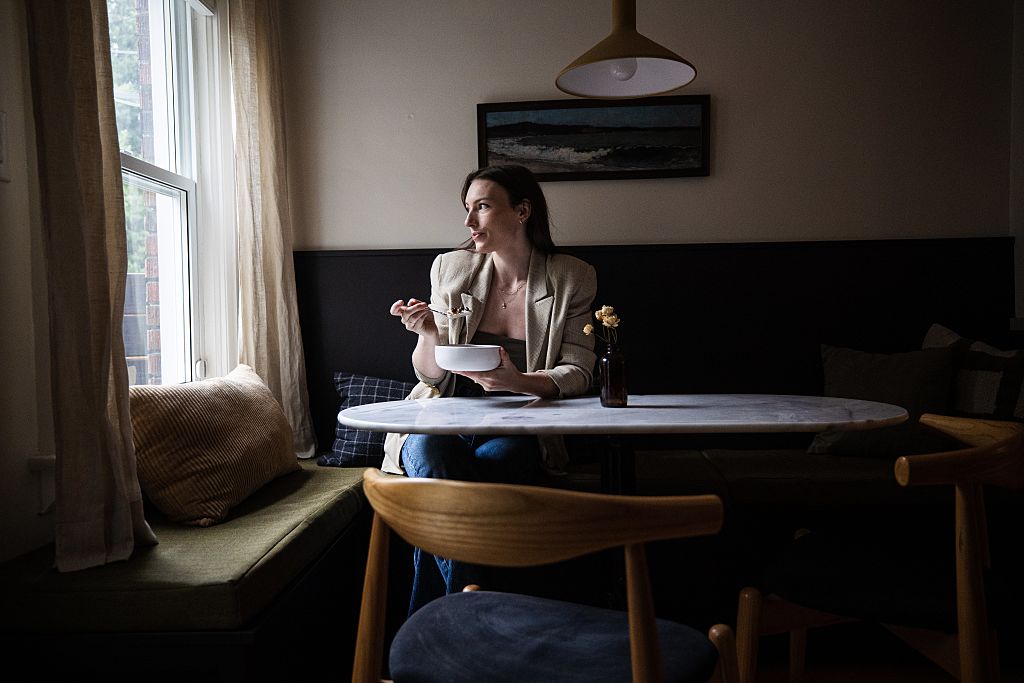
If bowling alone marks the decline of American mid-century organized social life, exclusively eating alone hints at something more foreboding. (Nick Lachance / Toronto Star via Getty Images)
In 1950, sociologist David Riesman’s The Lonely Crowd posited that a strong sense of conformity in America was replacing genuine human connection with a performance of group belonging. Avid consumers of mass culture, we had become primarily motivated by a desire to fit in. By blending into the crowd, he argued, we were all hiding from each other in plain sight.
Fifty years later, that seemed like a quaint problem to have. From churches to clubs to labor unions, as political scientist Robert Putnam argued in his landmark 2000 book, Bowling Alone, our civic infrastructure had disintegrated. The once-conformist crowds had dispersed, leaving behind a social void. Hunger for peer approval may have been misguided, but having no peers was far worse.
Another quarter-century on, atomization has only intensified. American life is suffering a profound social contraction, largely driven by new technologies that facilitate isolation. In the post-pandemic years, more Americans are working alone, worshipping alone, scrolling alone, exercising alone, and orgasming alone. And we’re increasingly eating alone too.
Today roughly one in four American adults eats all their daily meals in solitude, a more than 50 percent rise since 2003. For young adults under twenty-five, the increase is even more dramatic, with an 80 percent jump in solo dining over the past two decades. Living on an urban street with a rare surplus of street parking, I have a front-row seat to this dreary spectacle. Come lunch time, diners fresh from the nearby 7-Eleven or McDonald’s descend on my block to eat in their cars, patrons of the world’s loneliest cafeteria.
If bowling alone marks the decline of American mid-century organized social life, exclusively eating alone hints at something more foreboding. Consuming food all by oneself is an anomaly in the history of human civilization, a deviation from millennia of tradition. Shared meals stretch so far back that the earliest texts of ancient Sumerian feasts suggest their customs had already undergone centuries of evolution. As archaeologist Martin Jones writes in his book Feast: Why Humans Share Food:
A field of cattle will spend much of their waking hours grazing. In doing so, they naturally create a sense of individual space, avoiding eye contact as they proceed in quiet, unending, solitary consumption. That is a commonplace pattern among animal species, and quite distinct from the routinized, ritualized, social meals of our own species. At some stage our ancestors departed from that more commonplace animal behaviour to our unusual pattern of eating together, face to face.
You occasionally hear someone refer to solitary cupboard rummaging and fridge raiding as “grazing,” letting slip an awareness that the behavior is more bovine than human. But we know that human meals transcend mere animal sustenance. Across the world and throughout history, we share meals in a routine expression of friendship, cooperation, group belonging, mutual recognition, relaxation, and celebration.
By forfeiting the practice of eating together, we’re losing a reliable source of contentment. A study conducted by Robin Dunbar, a biological anthropologist at Oxford University, found a strong link between shared meals and greater overall happiness. The ability to dine with company is naturally correlated with other factors that increase life satisfaction, like having friends and family or leisure time. But Dunbar ran a statistical analysis to demonstrate that sharing meals also just makes us happier all on its own. He told the BBC that eating and socializing both trigger endorphins, and that when we pair the two activities, our endorphins shoot through the roof.
Dunbar’s study found that shared meals in which “laughter and reminiscences” were reported were the ones most strongly associated with positive effects. Little wonder: Jones observes that the world’s oldest clay human figurines are found among the remains of ancient feast halls, suggesting we learned to tell stories about ourselves in the same places where we converged to share meals. The simultaneous act of eating together and telling stories promotes a feeling of closeness that’s impossible to replicate by other means.
Perhaps that explains why we instinctively grasp for it, even in our isolation: while a minority of Americans now make conversation while eating any given meal, the rest mostly report watching television or scrolling social media. On my block at lunch time, drive-in diners stream videos on phones propped awkwardly against the steering wheel. Even when we’re eating alone, we fill our senses with human voices, faces, and personalities — a faint echo of the convivial ancient hearth.
Revive the Civic Restaurant
Social eating is a fundamental aspect of human civilization. It makes us feel connected and fulfilled, and forgoing it contributes to our feeling out of place, lonely, and sad. The obvious conclusion is that we should promote communal eating. Easier said than done of course: to fully reverse the current trend toward eating alone, we’d have to take on the entire architecture of social atomization, from overwork to remote work, from homebodyism to the decline in romantic cohabitation, from the rise of convenience food to the shrinking of social networks.
There is, however, a more direct solution worth considering: we can use public resources to build communal dining infrastructure.
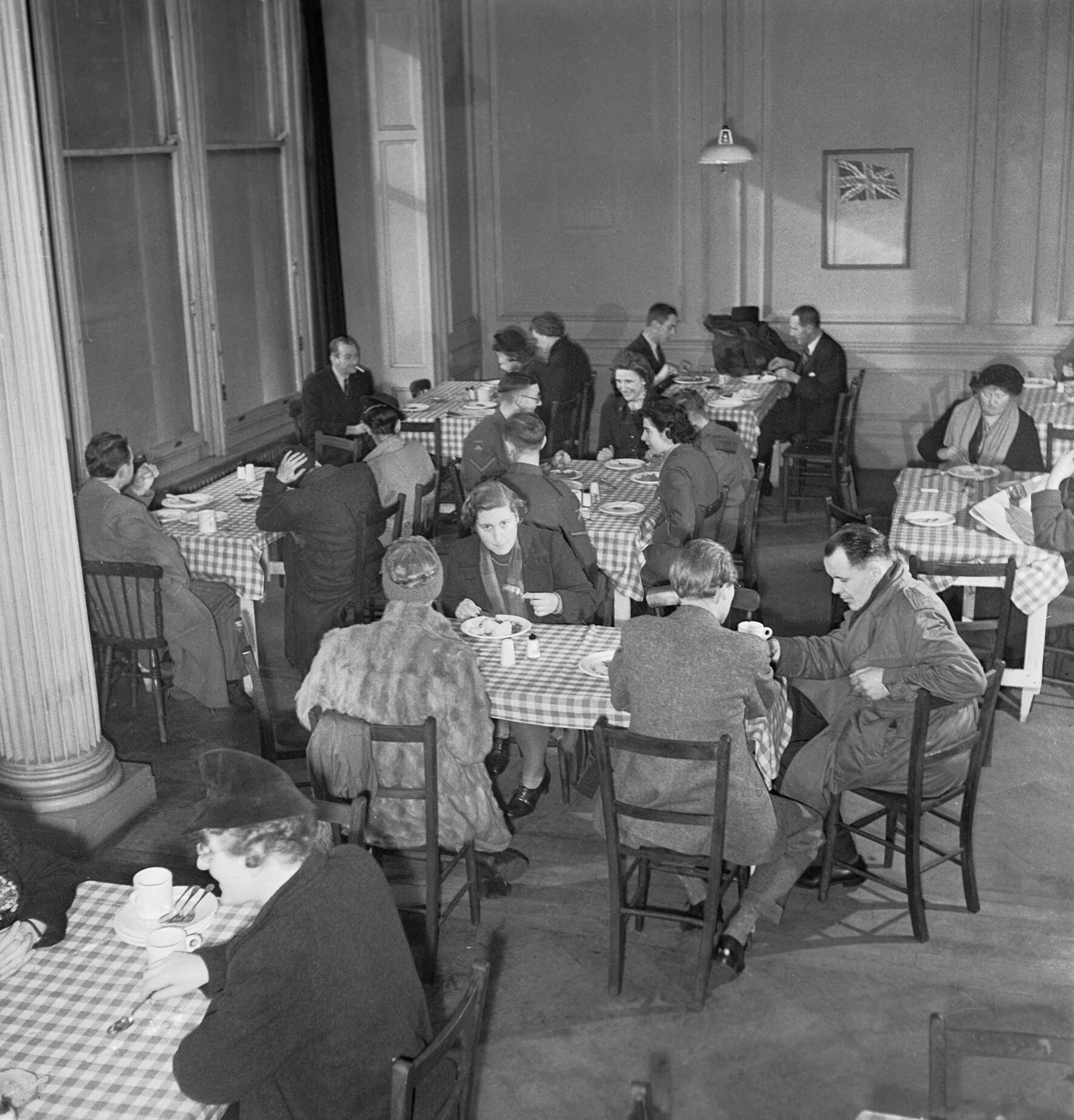
On this point, history offers much inspiration. Take, for example, the United Kingdom’s experiment in civic restaurants, over two thousand of which operated during World War II. These were initially established by the Ministry of Food, which had run a similar experiment in “national kitchens” during World War I, to ensure that wartime rationing and supply shortages did not result in malnourishment. But they soon flourished into popular and well-loved centers of community life.
Far from dreary feeding troughs, Britain’s civic restaurants were vibrant community cafés intended to boost morale and promote fellow feeling during wartime. Tens of millions of people ate at them during World War II, according to Bryce Evans, a historian at Liverpool Hope University and author of Feeding the People in Wartime Britain. Britain’s civic restaurants were designed for the general public, not just the poor. They were given prime high street locations and featured colorful decor and specially commissioned artworks. They served affordable food of a broadly palatable variety to diners who often lingered for warmth and camaraderie.
During wartime rationing, civic restaurants provided complete meals without requiring the precious coupons citizens needed for grocery shopping. Though private restaurants also operated outside the coupon system, their prices were out of reach for most working-class Britons. Civic restaurants were tax subsidized and, while expected to break even, were not operated for profit but rather to provide a dual social service: affordable nutrition and social cohesion. A three-course meal cost nine pennies, making eating out accessible to everyone, not just the rich.
They also drew large crowds, providing a positive, laid-back experience of public togetherness, a cheerful refuge amid the hardships of wartime. Many working-class people might have eaten exclusively at home for the entire war — and, if they lived alone, all by themselves — were it not for civic restaurants. Instead, they ate at lively restaurants where patrons were often treated to live music.
Also known as British Restaurants, these public canteens had broad cross-class appeal. Dining at one was considered patriotic, and besides, they were attractive venues with spirited atmospheres. They were, as another historian quoted by Evans put it, “a powerful force for public contentment.” While an occasional detractor grumbled of incipient communism, even the conservative press mostly approved. One right-wing writer, notes Evans, “argued in favour of the British Restaurant because, quite simply, he considered ‘we are all better for human contacts at meal times.’”
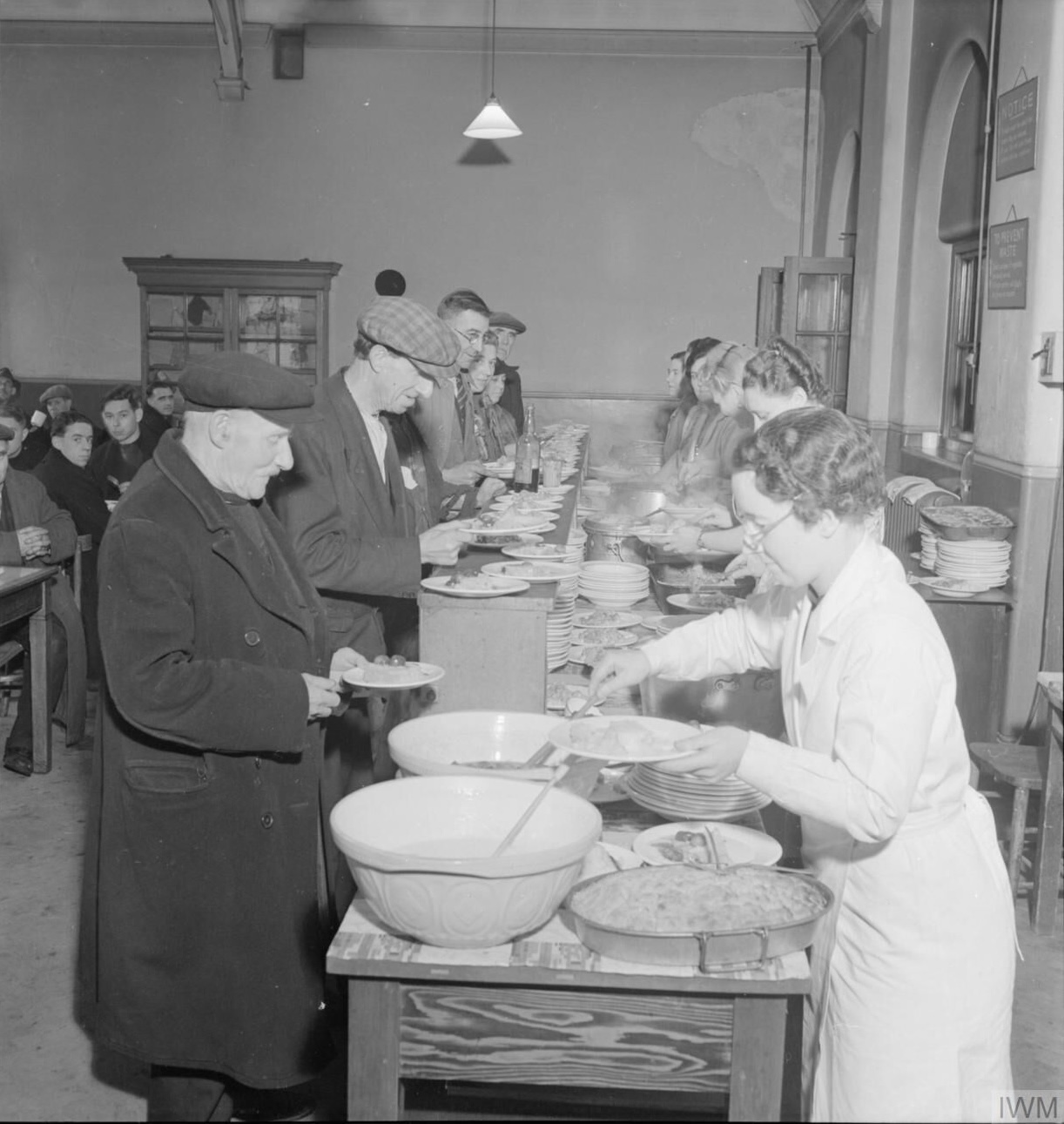
Winston Churchill argued that civic restaurants “served a most useful purpose and should not be allowed to disappear.” Their popularity ensured that many remained in operation for years after the war, not run for profit but nevertheless expected to break even. Eventually, due to a waning cultural appetite for anything tainted with wartime associations and austerity measures from conservative governments, civic restaurants disappeared, and the public’s memory of them grew hazy.
In recent years, British experts concerned about both food insecurity and rising loneliness have campaigned to revive civic restaurants. Under the banner of a research project, two new public restaurants inspired by wartime eateries are set to open in Nottingham and Dundee in 2026. One of the researchers behind the undertaking, Marsha Smith of the University of Nottingham’s Food Systems Institute, emphasized the project’s prosocial potential, telling the BBC:
I’m really interested in giving people opportunities to sit and eat meals together because I think it’s one of the most fundamental activities that humans undertake and it does so much more than just feed us physically. It really helps us to bond socially and it helps us to build community. It’s actually really good for our health over the longer term.
Make America Break Bread Again
Britain is hardly the only country to have experimented with public communal eateries. Sweden too created public canteens during wartime, repurposing the tradition of the folkkök, or people’s kitchens, which had flourished during the early twentieth-century labor movement. Germany has operated public taverns for centuries, a tradition that German socialists parlayed into the establishment of beer halls that functioned as “proletarian living rooms” where working-class culture and politics could flourish.
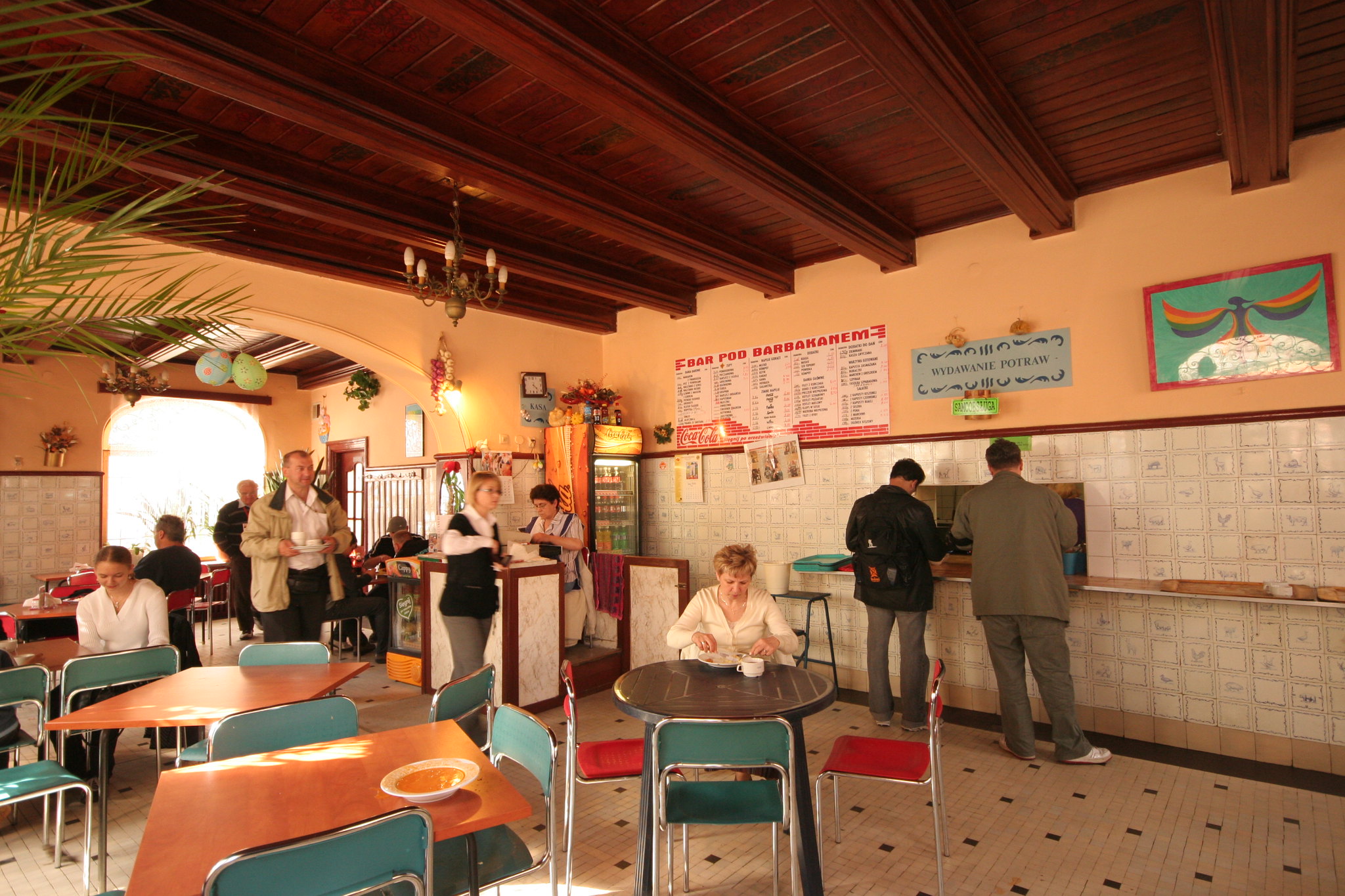
Poland today is still dotted with state-subsidized “milk bars,” a surviving legacy of the country’s Soviet past, which continue to serve “outrageously good” borscht to people from all walks of life in a warm, nostalgic atmosphere. Cuba still operates a sixty-year-old public ice cream parlor, Coppelia, also known as Havana’s “Cathedral of Ice Cream,” whose patrons gave birth to Nueva Trova music. “It was a time when I only drank milk and ate ice cream, we savored endless chocolate and biscuit iced drinks, exchanged poems, stories, songs,” remembered Silvio Rodriguez, one of Cuba’s most beloved songwriters, of his days as a young musician mingling with other artists at Coppelia.
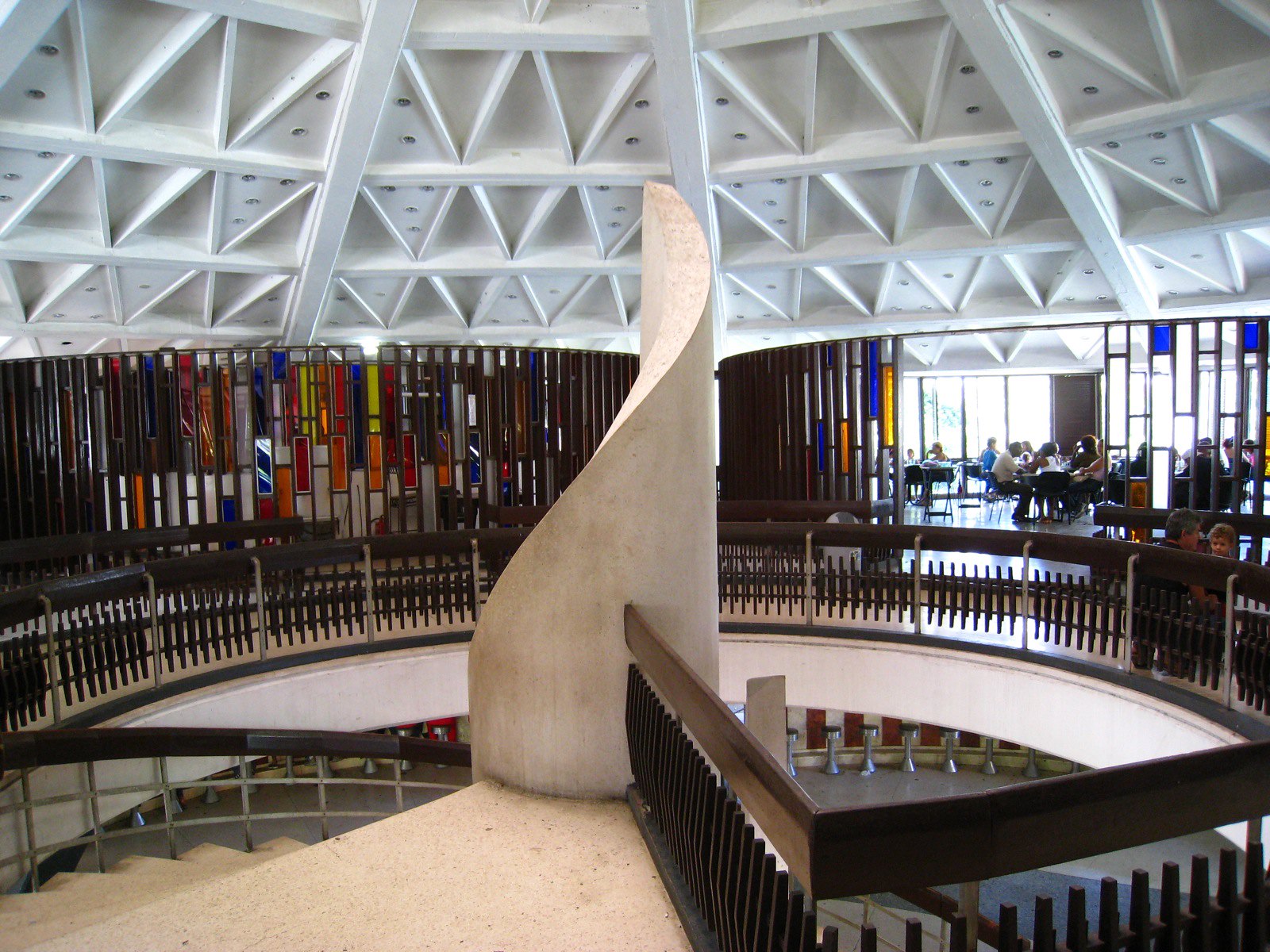
While US history is replete with examples of publicly run relief kitchens for the poor, forestalling hunger as a last resort, our communal food initiatives have never been broad-based or focused on fostering camaraderie. It’s an odd oversight really: public swimming pools and athletic facilities are state-subsidized, prosocial infrastructure. If we’re willing to aggregate resources for communal recreation, why not do the same for the far more routine act of dining? Rather than fund more massive giveaways to the coddled ultrarich, we could invest in pleasant and accessible public cafés where all of those car-bound diners lining my block could converge and pull up a chair.
The architects of the British civic restaurant scheme set out to “provide not only good fare but good cheer,” with the express hope that public diners would “introduce a little variety for those people who lead dull and monotonous lives.” By all accounts, they achieved this aim, and we can do the same today.
At private restaurants, each diner is a customer on a separate and entirely transactional errand. You’re meant to enter, order, find the farthest seat from other patrons, eat with your eyes down, and leave in a hurry — a far cry from the social eating experience humans evolved to enjoy. By contrast, the public diner can be a place of mutual belonging. To better serve an explicitly prosocial purpose, they can be outfitted with long communal tables, which University of Sydney behavioral ecologist Antone Martinho-Truswell calls “a physical antidote to loneliness.”
In view of America’s many social afflictions, solitary eating may seem trivial. In reality, it’s emblematic of the overarching social crisis we face, a small indignity endured by tens of millions every day. Addressing it with public investment would be a show of strength against numbing atomization, a renewed vote of confidence in the crowd. To survive, we must eat. But to live human lives of dignity and fulfillment, we must break bread.